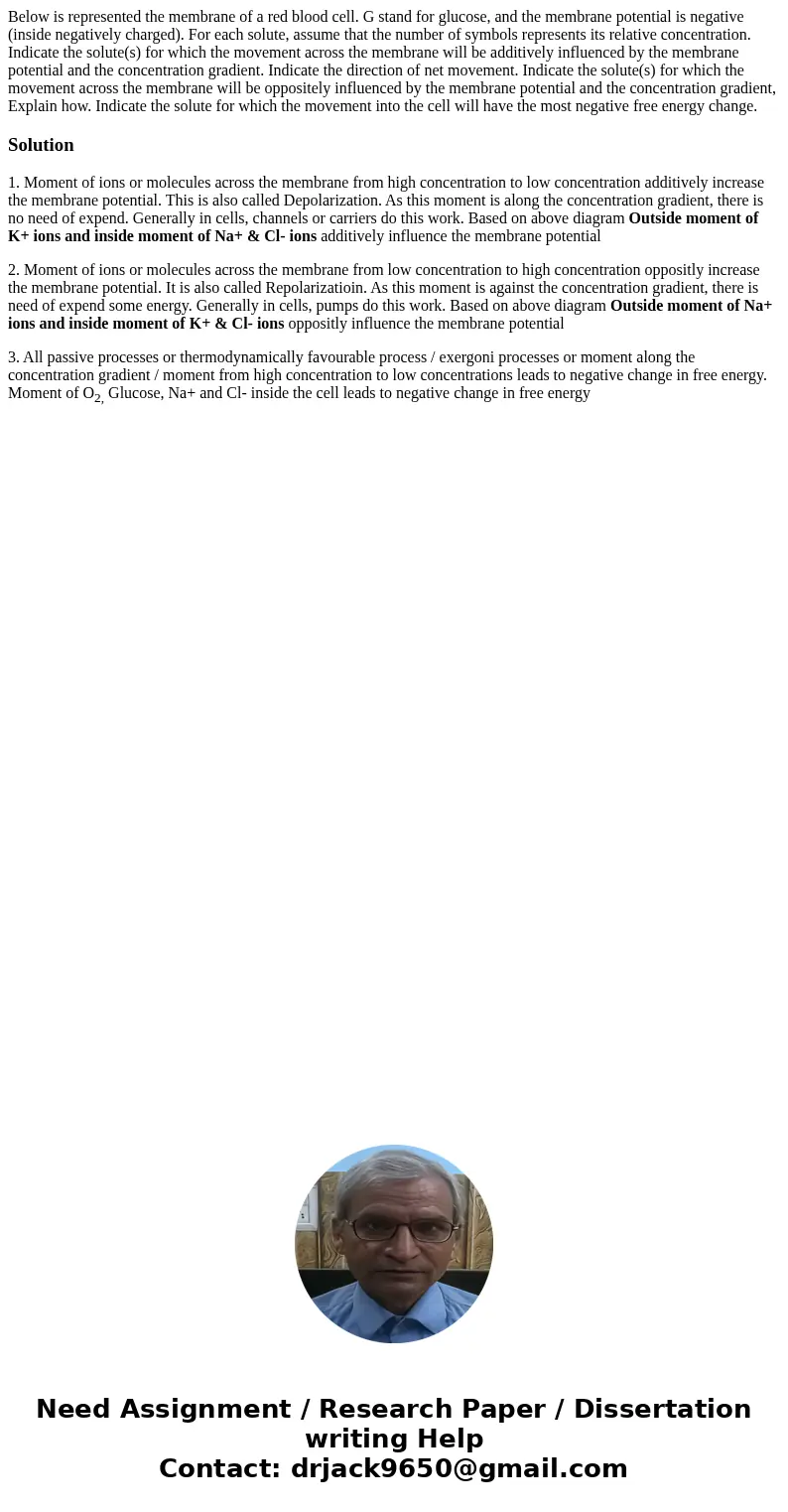Below is represented the membrane of a red blood cell G stan
Solution
1. Moment of ions or molecules across the membrane from high concentration to low concentration additively increase the membrane potential. This is also called Depolarization. As this moment is along the concentration gradient, there is no need of expend. Generally in cells, channels or carriers do this work. Based on above diagram Outside moment of K+ ions and inside moment of Na+ & Cl- ions additively influence the membrane potential
2. Moment of ions or molecules across the membrane from low concentration to high concentration oppositly increase the membrane potential. It is also called Repolarizatioin. As this moment is against the concentration gradient, there is need of expend some energy. Generally in cells, pumps do this work. Based on above diagram Outside moment of Na+ ions and inside moment of K+ & Cl- ions oppositly influence the membrane potential
3. All passive processes or thermodynamically favourable process / exergoni processes or moment along the concentration gradient / moment from high concentration to low concentrations leads to negative change in free energy. Moment of O2, Glucose, Na+ and Cl- inside the cell leads to negative change in free energy

 Homework Sourse
Homework Sourse